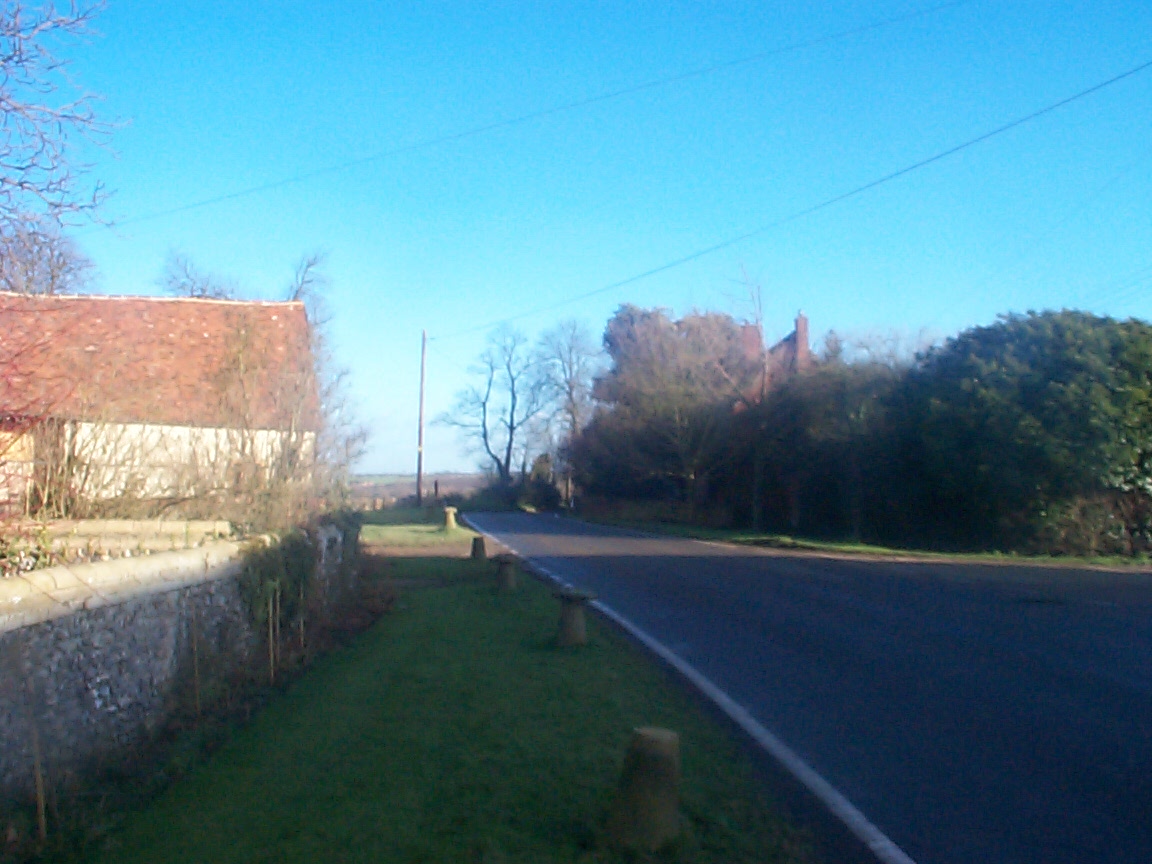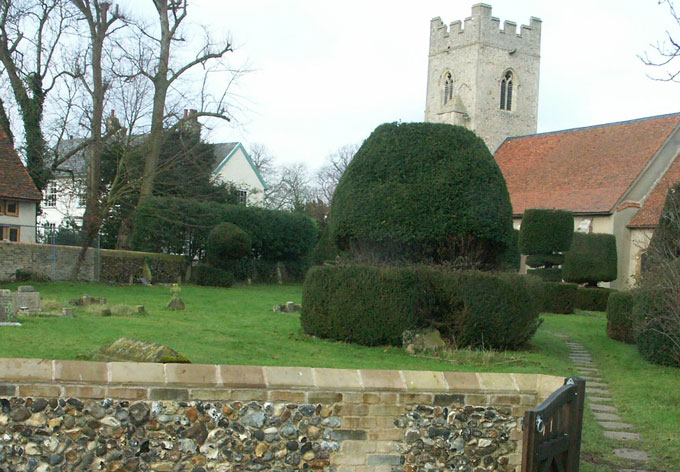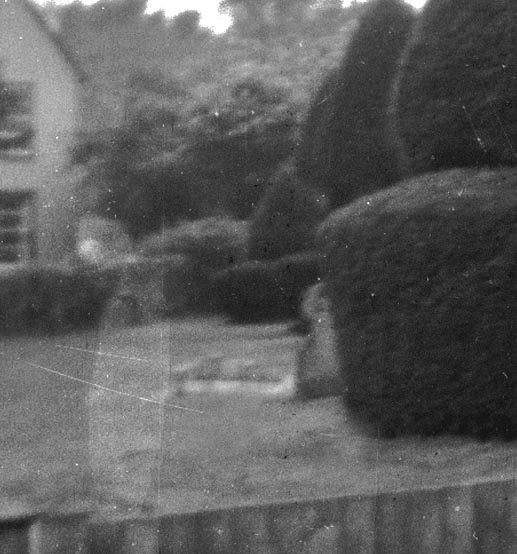|
Modern Borley |
||||||||||
|
|
The tiny village of Borley in rural Essex, the scene of Harry Price's most famous investigation, has obviously undergone changes since the time that Price knew it over sixty years ago. However, the march of time has in no way altered the backdrop of what is the world's best known haunting as much as one would think, and there is much for the contemporary visitor to Borley to see today which immediately connects with the days of the Bulls, the Smiths and the Foysters. Borley Church, the former Rectory Cottage, Borley Place - the birthplace of Henry Dawson Ellis Bull who built Borley Rectory in 1863 - with its adjacent Tithe Barn and the farm alongside the old Rectory garden are the permanent markers of the Borley story which have come down from the hey day of the 'Most Haunted House in England' relatively unaltered. The main changes to the Borley of 2005 over that of the Borley which one of Harry Price's official observers would have been familiar with in 1937 are the addition of several new houses along the western stretch of Hall Road which passes through the village up the hill from Rodbridge Corner approximately a mile to the east and the obvious redevelopment of the Rectory site itself. It is important to state at this point that Borley Rectory no longer exists. The building, which had not been used as the official residence for the rector of the parish since the Rev. Lionel Foyster moved out in October 1935, was badly damaged by fire on the night of 27th/28th February 1939. The ruins suffered further damage from high winds before finally being demolished in 1944. The site was subsequently split up and sold off into individual plots on which were built several private bungalows. The only original building remaining on the site is the former Rectory Cottage (a building itself older than Henry D.E. Bull's rectory), much extended and altered to the rear, which today is also a private residence. It must be borne in mind by visitors today that the only part of the village that the public has the right of admittance to is the churchyard and Borley Church itself, although this is kept locked at all times when not in use and access is only available through one of the village key holders. The notoriety which the haunting of Borley Rectory has given the village has resulted in much unwelcome and unwanted attention and abuse of the location and its inhabitants over the years and it is true to say that many Borley residents are deeply suspicious and in some cases downright hostile to visitors. Borley occupies such an important place in the history of haunted houses that as the writer and ghost-hunter Peter Underwood has said must be visited at least once by all serious students of the paranormal. All I can say is please treat the place & its residents in the way you would wish to be treated yourself.
In this section of the website are articles and essays on different aspects of contemporary Borley. In particular it is the intention to feature material which examines the history and happenings of the haunting of Borley Rectory in a modern context in order, where possible, to obtain a better understanding of specific events of the past. Many of these events themselves do not depend on the actions or involvement of Harry Price. Borley Rectory was regarded as a haunted house long before Harry Price ever heard of the place. Events which have long since passed into the Borley canon, such as the appearance of the spectral nun on the Rectory lawn on 28th July 1900, took place many years before Price visited Borley. Through his writings, Price did make Borley Rectory the most famous haunted house in the world, but the Borley haunting does not depend on Harry Price for its existence, although his involvement in the case is controversial.
The Borley Lights Phenomena Examined - Part One by Paul Adams & Eddie Brazil The first of two essays which looks at a particular aspect of the Borley haunting - the appearance over several years of strange lighting effects in certain rooms of the Rectory building. This essay examines the validity of one of the most popular explanations for this phenomenon, that the window lights were caused by reflections from passing trains on the nearby Sudbury to Long Melford railway line. The Borley Lights Phenomena Examined - Part Two by Paul Adams & Eddie Brazil The second essay on the Rectory window lights looks at the operation of the Sudbury to Long Melford railway and other possible non supernatural causes.
The Brazil Borley Photograph by Paul Adams Many photographs have been taken of the former Rectory grounds and Borley Church over the years since the destruction and demolition of the Rectory building in the mid 1940s. Several purport to show odd and inexplicable effects. This essay looks at one of the most important and convincing photographs that was taken at Borley in September 1972. Harry Price & Borley by Andrew Clarke Harry Price's first contact with Borley dates from his initial visit to the Rectory during the incumbency of the Rev. G.E. Smith and his wife in July 1929. Local historian Andrew Clarke of the Foxearth and District Local History Society gives his views on the Borley case and Harry Price's involvement in it. Borley Rectory in Modern Photographs by Eddie Brazil & Paul Adams With the Rectory now non-existent, what the former site of 'The Most Haunted House in England' was really like can now only be speculated upon by enthusiasts and students of the case. This essay presents both modern and historical photographs of Borley Rectory and its grounds which show what the site is like today, nearly sixty years after the building was demolished in the summer of 1944. Did M.R. James Visit Borley? by Eddie Brazil Montague Rhodes James is recognised as the greatest English ghost story writer. But did he in fact visit the site of England's most notorious haunting and was he inspired by the area to write one of his most famous tales? Eddie Brazil discusses this interesting theory. The Site of Borley Rectory in 1984 by Richard Lee-Van den Daele and Paul Adams This short article shows the former site of Borley Rectory as it was in the mid 1980s in photographs taken by Richard Lee-Van den Daele. The Relics of Borley Rectory by Paul Adams & Eddie Brazil There may be nothing of the Rectory itself at Borley today but a few articles associated with the 'most haunted house in England' still survive. The Borley Rectory Models by Paul Adams A short article which shows several models which have been made of the Rectory over the years. Borley Rectory Connections - Part One by Eddie Brazil & Paul Adams A photographic guide to places closely associated with the Borley story taken by Eddie Brazil in October 2005. Borley Rectory Documentaries by Paul Adams Clips from two documentary programmes that feature the Borley haunting, The Ghost Hunters (1975) and Strange But True? (1994).
|
|||||||||
The Base Room . Biography . Timeline . Gallery . Profiles . Séance Room . Famous Cases . Borley Rectory . Books By Price . Writings By Price . Books About Price . Bibliography . Links . Subscribe . About This Site All original text, photographs & graphics used throughout this website are © copyright 2004-2009 by Paul Adams & Eddie Brazil. All other material reproduced here is the copyright of the respective authors. |


